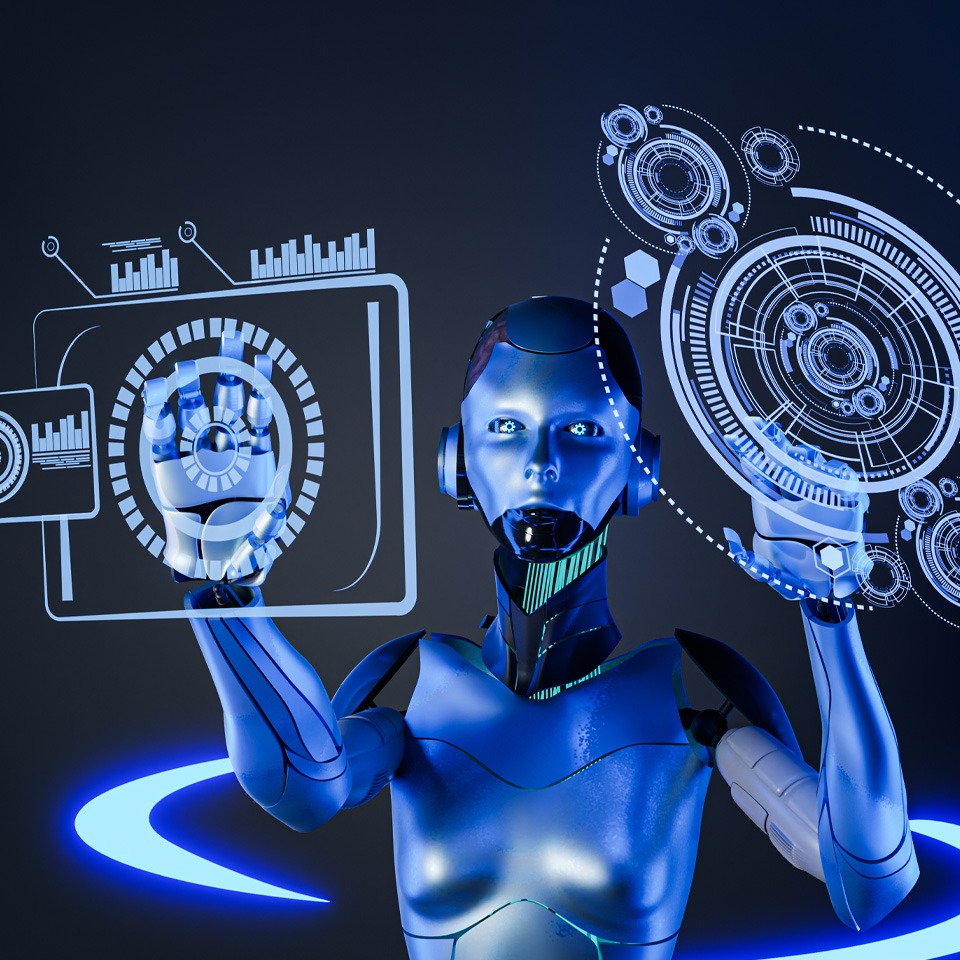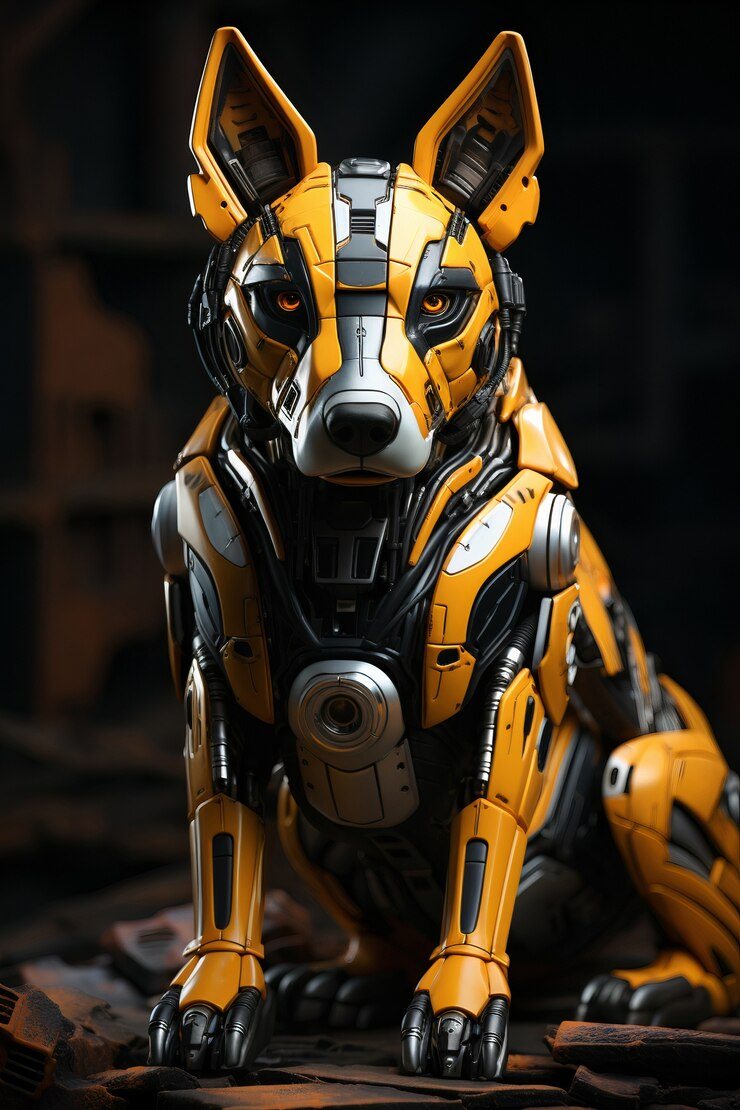Advanced robotics is the combination of robust hardware and advanced programming, giving rise to smart technologies that interact with the real-world environment to solve real-world problems. Some of the greatest examples of smart sensor technologies are room cleaning robots, lawn mowing robots, ultrasonic, touch, and light sensors.
This advanced robotic technology is semi-autonomous, which makes it capable of performing tasks independently. The most common example of advanced robotics is "Humanoid robots." They are even capable of showing certain emotions and can perform actions such as running, jumping, and other human actions.
To better understand the meaning of advanced robots, one must first understand the difference between conventional robots and advanced robots.
Conventional robots are machines that can make our life easier. They are used to complete day-to-day or majorly routine tasks.
The best example to describe conventional robots is industrial robots. Industrial robotics employs automated machines that are used in manufacturing industries for the sole purpose of automating business processes. They take care of tasks that involve moving products such as picking, dropping, aligning, tightening in industries and warehouses. They are also helpful in the packaging processes. Advantages of industrial robotics are increased productivity and speed, improved quality and working environment, higher accuracy, and an overall reduction in working hours.
The most common example of an industrial robot is a robotic arm used in the manufacturing processes. A robot arm is used to perform one assigned task repeatedly without any human assistance, such as picking up heavy parts, or assembling one part with another, or disposing of the waste, etc. Another example is that of a washing machine, where once the action is predetermined, it keeps on performing the same task over and over again.
On the other hand, advanced robots are intelligent, flexible, smart, efficient, and autonomous. They are said to be the Robots of the Future. They can carry out tasks originally performed by humans, such as cleaning and assisting in surgeries, granting them full autonomy. They are devoid of any external influence.
Robots have surely changed the way industries work, especially in today's era. They have transformed the business process. These robots have decision-making abilities programmed in them, and it helps them function in any type of environment. The most common examples of advanced robots are autonomous drones, medical assistant bots, care bots, surgical bots, co-bots, and more.
Growth of advanced robotics
Advanced robotics emerged in the 1980s as a term for robots featuring sensitisation and a powerful combination of software and hardware to make intelligent decisions, in contrast to traditional machines.
These types of robots are not limited to the manufacturing environment or Industry 4.0 – although a large part of sales are oriented towards this sector – but are also useful in different industries: construction, health or safety and rescue, for example.
The ability to make decisions autonomously, precision and error reduction or high mobility are some of the characteristics that make the advanced robotics market is moving at high speed, as can be seen in the following table:

Future of advanced robotics
The future of advanced industrial robotics is multi-tasking, collaborative robots, with greater autonomy and increasingly accurate sensing.
Advanced robotics has not yet reached its high point and there are still challenges to be faced. For example, the gap in the technological training of many of the workers in the manufacturing industry or the high cost that some of these technologies represent.
Despite the fact that technological development is constant, we has the capacity to offer innovative robotics while minimising these problems as much as possible.
Industry 4.0 uses advanced robotics to increase productivity by taking over manual tasks and accomplishing them faster, which is known as the factory of the future. The assembly of flexible parts is one example. Advanced robots can do this because they have the ability to adjust themselves and course correct when procedures and processes change. Conventional robots in an industrial setting do not have this type of adaptability. If procedures or processes change on the assembly line with conventional robots, they have to briefly stop for reconfiguration.
In addition, use of advanced robots offer another advantage over conventional robots in that they are easier to set up and configure on an assembly line from the beginning of their implementation. Advanced robots can also take advantage of simulation software to learn how to perform an array of tasks. This is a desirable attribute for companies that use production systems which require many adjustments during the course of production.
On the assembly line, manufacturers improve quality, reliability, and precision by closing skills gaps with technology. They are also much safer than their conventional robot counterparts at working in hazardous environments. Conventional robots are less safe for humans to work with compared to advanced robots. Many advanced robots actively “perceive” their environment with machine vision and smart sensor technology.
Digitizing manufacturing environments offers more configurable, flexible, and adaptable production systems. Advanced robotics allow manufacturers to respond to the increasing demand for customized products and single product variations.
Impact of advanced robotics on industries
The impact of any concept includes both its positive aspects as well as challenges that it poses. To understand the positive impact of advanced robotics on industries, we need to understand what benefits and advantages it offers. Advantages of advanced robotics are:
- Enhanced Speed: Every industry is becoming more and more fast-paced. Speed is an important factor in the manufacturing industry and may allow manufacturers to gain a significant competitive advantage. Advanced robots do not take any breaks while performing a task in the workplace, unlike humans.
- Safety: Working in extreme heat or cold, chemically exposed regions, or extremely tight spaces can be harmful to humans. Tasks performed by machines provide help in keeping the manual labour safe from all these.
- Accuracy: Every human makes mistakes, no matter how carefully they carry out a task. When it comes to advanced robots, their main advantage is that they carry out the activities with utmost perfection, as they hardly deviate from their programming or commit any errors, which in turn increases efficiency.
- Productivity: The most important advantage that Advanced Robots provide is an increase in productivity. Advanced robots can take over the redundant, comparatively less strategic tasks, routine decision-making tasks, etc.
- Agility: Advanced robotics are more alert, intelligent, and quick to understand the processes.


Now let's understand the specific impacts of advanced robotics on certain industries
- The demand for advanced robotics technology in manufacturing is increasing in the future years. Manufacturing industries are embedding more advanced technologies such as Artificial Intelligence, Machine Learning, and IoT to make more complex designs, streamline supply chain and logistics, and simplify the processes. Some of the impacts that advanced robotics have in the manufacturing industry are a comparatively higher investment rate, increased reliability, greater precision of work, especially when performing detailed and minute tasks, and decreased costs.
- Advanced robotics is making a big impact in healthcare and the field of medicine. Advanced robotics is being used for disinfecting patient rooms as well as operation theatres. There are Robotic Assistants available who help people with paraplegia to move more freely, and there is even Robotic Surgery Assistance who perform minimally invasive surgeries.
- Advanced robotics technology has largely impacted the logistics sector as well. From helping in sorting centres to final-mile delivery, people working in this sector will have greater advantages in speedy, fast, and quality delivery.
- Advanced robots can also aid in packing, picking, and transporting packages and can help in sensing the near environment, computing speed, and power in the warehouses and supply chain industry.
- The mining Industries are also quite reliant on advanced robotics and technology. These robots help in mining in hazardous terrain and help in keeping the human personnel safe. They also enhance speed and efficiency without causing any harm to the workers.